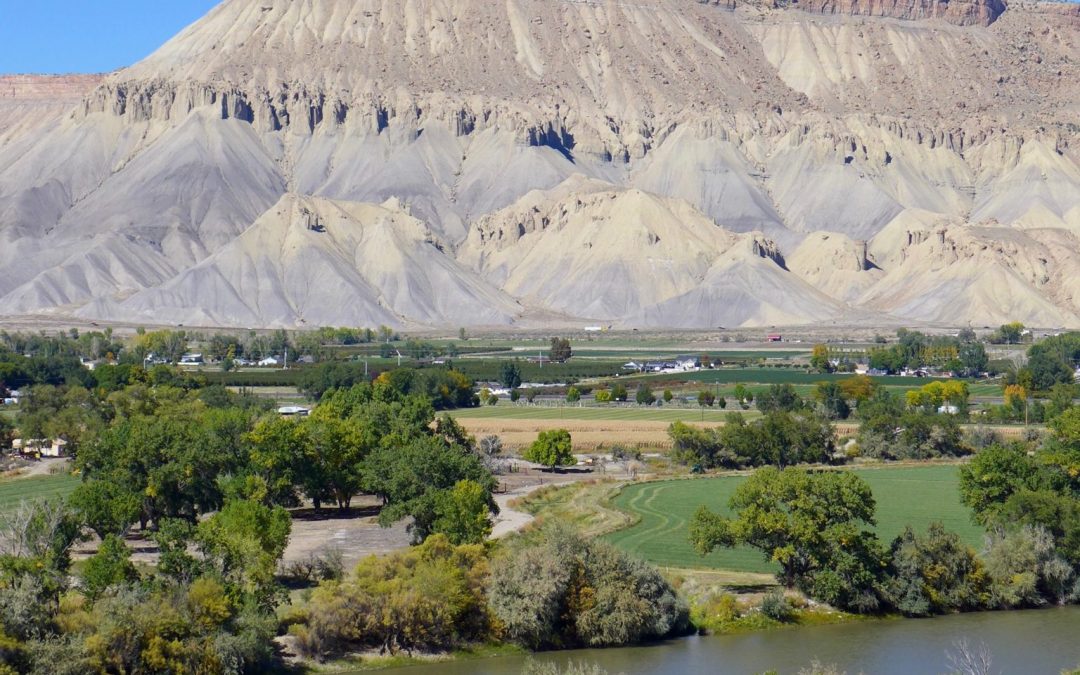Colorado West Slope water officials turned up the volume on the call for action around water and climate change, calling it a “train wreck.”
At the Colorado River District’s Annual Water Seminar Oct. 1, Andy Mueller, general manager of the Glenwood Springs-based district, described climate change as a train wreck that needs to be stopped.
“For a decade or more, we have seen the train wreck slowly moving this way. It has picked up speed pretty significantly in the last couple of years, and the question is how do we avert the train wreck,” Mueller said.
He pointed to changes already underway as a result of the warming climate, and those that will be necessary. Uses of the Yampa River as it flows through Steamboat Springs have been curtailed for eight of the last 14 years because of high temperatures and low flows, he said. There have been fish kills in the Colorado River and other impacts to outdoor recreation. Ski areas face a shorter operating season and those in lower elevations may not survive. Agriculture users may need to remove marginal land from irrigation and take stock of their least productive crops.
“I think at every level our folks who are paying attention to the science and the hydrology, there is an increasing sense of urgency in the Colorado River Basin, and it’s shared by folks on the ground today, from ranchers in the Yampa River Valley to farmers in the Uncompaghre Valley to major urban providers like Denver Water. We all recognize there is something very different going on than there was 10 years ago in the Colorado River.”
“Climate change is barreling through the doors of America,” said Michael Connor, the second-highest ranking official in the Interior Department during the Obama administration and now a Washington D.C.-based attorney.
Brad Udall, a senior scientist and scholar at Colorado State University, said he began working on climate change in 2003. “I mostly got a lot of dirty looks,” he said. That has changed. “I have decided that misery loves company.”
Udall stressed the importance of inflows into Lake Powell from Colorado, New Mexico, Wyoming and Utah, the states that comprise the Upper Colorado River Basin. Those inflows have averaged 8.4 million-acre feet since 2000.
Each year 500,000 acre-feet is lost to evaporation, leaving 7.9 million-acre-feet for release from Lake Powell. That’s less water than is needed to comply with the requirements of the 1922 Colorado River Compact. Unless flows improve, said Udall, the Upper Basin states may have to forego use of some of their own Colorado River supplies to ensure Arizona, California and Nevada, the Lower Basin states, receive their legal share.
How did we get to this point? Several researchers in the last five years have fingered rising temperatures as a crucial factor in creating what Udall and his collaborator, the University of Michigan’s Jonathan Overpeck, in a famous 2017 paper, called “hot drought.” They said temperatures alone explained at least a third of the lesser river flows.
Loss of snow may further exacerbate warming. A 2020 paper by P.C.D. Milly and K.A. Dunne in Science found a 9.3% loss in Colorado River flows with each one degree Centigrade in warming. A key finding, said Udall, was that as shiny, reflective snow recedes, the amount of absorbed radiation rises.
A decade ago, there was no clear signal whether a warming climate would affect precipitation on the Western Slope. A picture is starting to emerge, with Southwestern Colorado now at significant risk of precipitation — and runoff — declines, he said.
The San Juan River near Bluff, Utah, had 30% less water in 2000-2019 as compared to 1906-1999. The Colorado River at Glenwood Springs had a 6% decline.
Soil moisture also matters. If the soil remains dry from the previous year, it sops up more of the potential runoff. In 2020, the snowpack was 100% of average but the runoff was 50%. That soil-moisture deficit played into this year’s even worse runoff, 30% of average from a snowpack that was 90% of average.
Dr. Gigi Richard, director of the Four Corners Water Center at Ft. Lewis College in Durango, was asked whether she detects more acceptance of climate change as impacting water.
“Yes,” she answered. “In Western Colorado, it’s really hard to deny that from day to day, year to year, that we are feeling the impacts of climate change.”
Connor, the former Interior official, pointed out that tribes in the Colorado River Basin have reserve rights, making them superior to the terms of the Colorado River Compact. Because of the sheer volume of those rights, especially in Arizona, many see them as crucial in whatever new Colorado River operating agreements are negotiated going forward.
“You need to be able to provide the tribes value for their rights,” if tribes are asked to give up use of those water rights, Connor said.
Muller warned of the need for adaptation and offered a conciliatory approach, saying water interests would need to unite to find solutions.
The River District, he noted, sought and obtained a tax increase from voters in an election that was supported by both the Grand Junction Chamber of Commerce and the Environmental Defense Fund. “When,” he asked, “is the last time you saw those two groups on the same page?”
Fresh Water News is an independent, nonpartisan news initiative of Water Education Colorado. WEco is funded by multiple donors. Our editorial policy and donor list can be viewed at wateredco.org.


 Print
Print